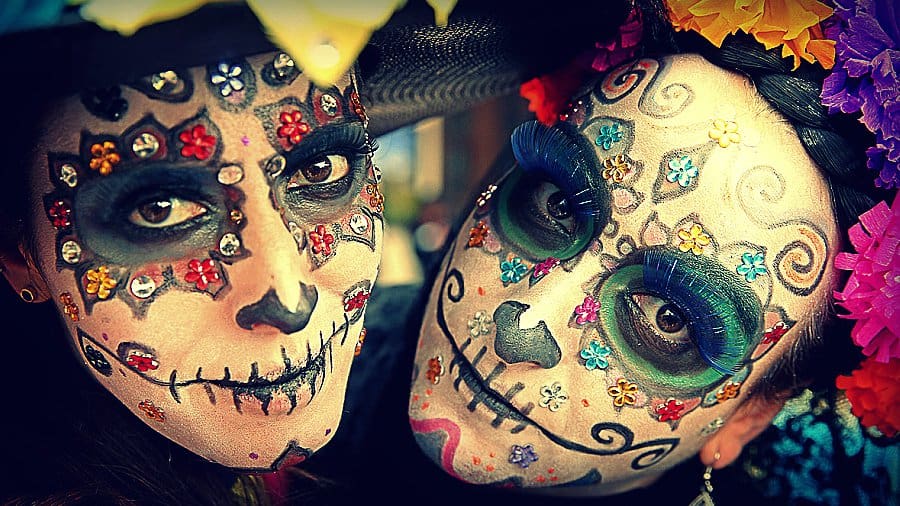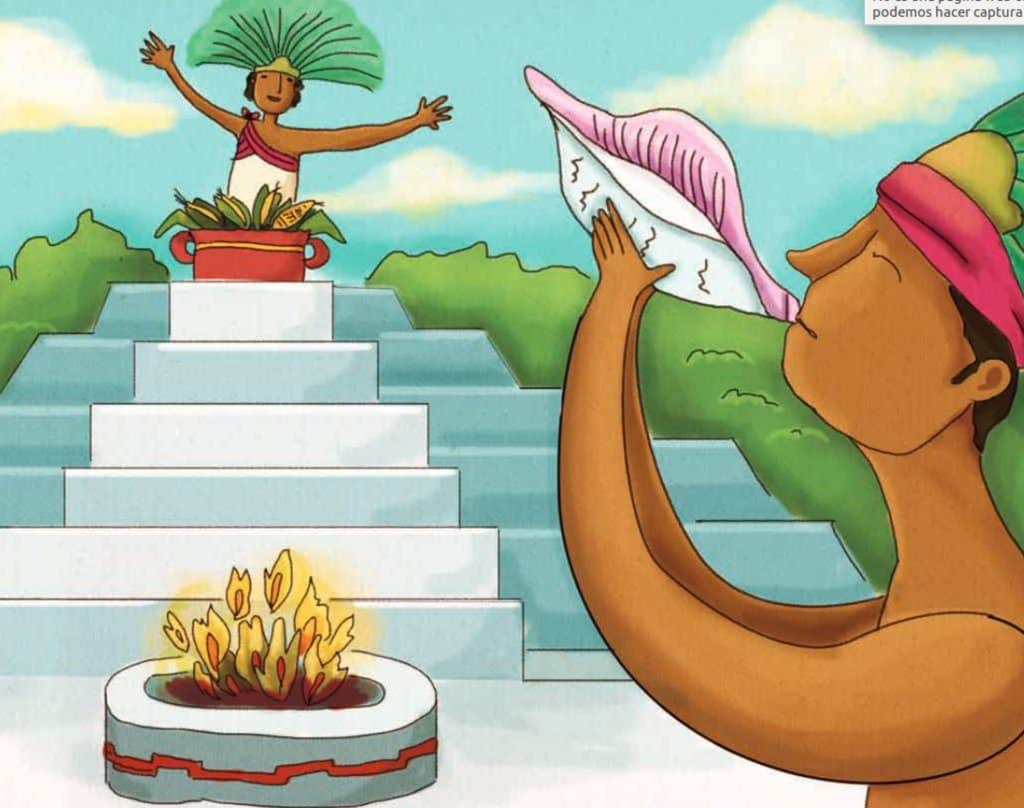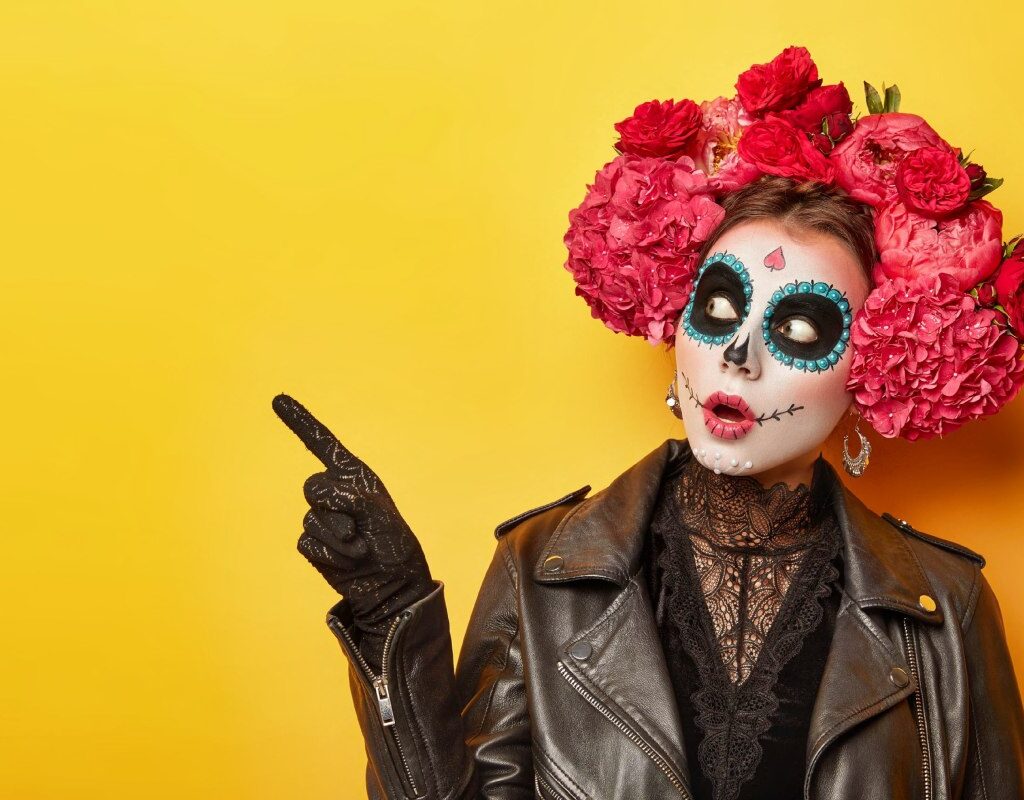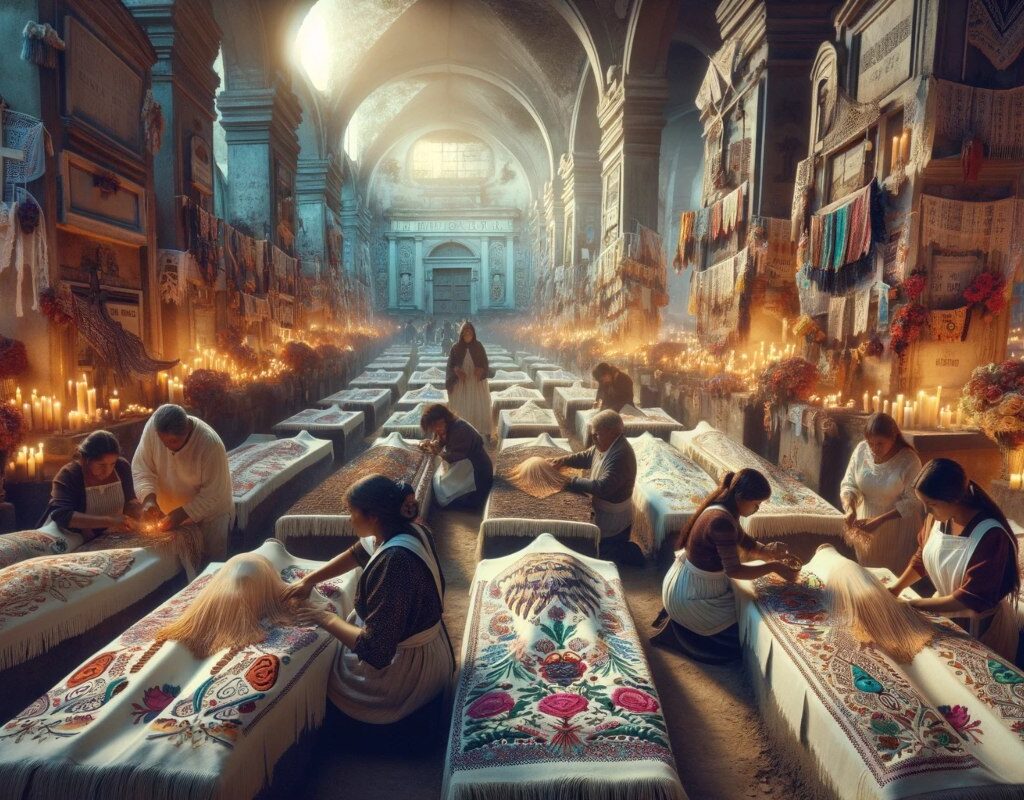The Day of the Dead is one of Mexico’s most emblematic festivals, where death is celebrated with color, music, and tradition. If you’re planning to immerse yourself in this rich culture, this article will guide you through the best destinations in Mexico to experience the festivities up close. From the Skull Festival in Aguascalientes to the mystical celebrations in Michoacán, each location offers a unique experience reflecting the diversity and richness of Mexican traditions surrounding this special date.
Ideal Destinations in Mexico for Celebrating the Day of the Dead
Aguascalientes
At the San Marcos Island in the state capital, the “Skull Festival” takes place from October 28 to November 4. As with each edition, the festival pays tribute to José Guadalupe Posada, a local visual artist and creator of the famous “Catrina,” an icon of the Day of the Dead, which in 2012 celebrates its 100th year.
The festival combines various disciplines like music, cinema, theater, and gastronomy, along with tram tours, artisanal exhibitions, and altar contests. Moreover, the Skull Parade through the city’s Historic Center is a tradition. You can also visit the National Museum of Death and the José Guadalupe Posada Museum.
Riviera Maya
The “Festival of Life and Death Traditions” is celebrated from October 30 to November 4. You can enjoy theater, dance, music, cinema, workshops, guided tours, gastronomy, and exhibitions; all under the concept of life and death in the pre-Hispanic Mayan world to keep this tradition alive.
The activities are spread across 10 different forums, involving 36 Mayan communities from six municipalities of the peninsula.
Guanajuato
San Miguel de Allende will host for the first time the “La Calaca Festival” from November 1 to 4. This festival is rooted in the Day of the Dead celebration in the country; and is a tribute to indigenous traditions.
The streets, plazas, and cemeteries of this beautiful city will be filled with festivities and color; one of the main attractions will be a photo session by Spencer Tunick, where the public will pose nude. There are conferences about the festival, cemetery tours, cinema programs, a TEDx edition, and various parties and cocktails.
Michoacán
Undoubtedly, Michoacán is one of the most traditional states in Mexico, especially concerning the Day of the Dead. Lake Pátzcuaro is the most visited due to the deep mysticism of its inhabitants in welcoming the souls of their deceased. Here, it’s not a festival, but a celebration to honor those who are no longer in this world of the living.
The celebration begins on October 31, with the preparation of dishes to be placed on traditional offerings and altars. On November 1, it’s customary to visit and decorate the graves of the “little angels,” children who have passed away; and on November 2, adults who have died are honored.
A part of the local tradition is preparing typical dishes and holding family processions at night at the local cemeteries to remember their deceased.
Mexico City
Not far away, locals can also enjoy a very traditional celebration by visiting San Andrés Mixquic, a place located in the Tláhuac borough.
Offerings are placed in the streets, and tours are offered through the neighborhood cemeteries, which, on November 1 and 2, are adorned with marigold flowers, sugar skulls, and some dishes in honor of the faithful departed.
You can enjoy typical dishes like dead bread, sugar skulls, corn, and esquites, as well as dances and traditional mariachi music.
Morelos
The “Magical Town” of Tepoztlán always dresses up in honor of its dead, and the Day of the Dead celebration is experienced uniquely.
On the night of November 1, while inside the houses an altar of the dead is set up in honor of All Saints and the Faithful Departed, the owners set up bonfires, and take out their chairs and baskets full of sweets.
These are given to children who carry their “calaverita” or chilacayota, and it’s not a sign of disdain or discrimination, but in the “Sacred Valley,” Halloween costumes are not accepted. You can eat typical dishes and buy beautiful crafts like the traditional “Carrizo Skulls.”
Puebla
One of the most rooted and traditional localities is Huaquechula, distinguished by its white mortuary offerings.
The “end-of-year” altars, as they are also called, are dedicated to those individuals in the community who passed away in the months preceding the November first celebration.
Their structure is pyramid-shaped with three or four levels, usually placed in the vestibule of houses, where the souls must arrive to enjoy the feast offered to them.
On these altars, photos of the deceased are placed, along with food and objects related to the deceased when they were alive; thus, we have fruits, varied food like mole, and drinks like tequila and beer.
The image of the deceased is often flanked by ceramic figurines known as “lloroncitos,” which represent the mourners and whose origin is also pre-Hispanic.
San Luis Potosí
In the Huasteca Potosina region, Xantolo is the name given to the Day of the Dead festivities in the state, starting on October 31 and ending on November 4, a period during which they welcome their faithful departed. The living prepares music, dances, songs, and food for their dead.
In addition to the traditional altar, known as “arco,” its central feature consists of four wooden poles placed at each corner of the table, representing the stages of a person’s life, which are bent to form two arches covered by crossbars symbolizing the mythological rivers that the soul must cross to purify itself.
The Cempasúchil or Cempoalxochitl flower is placed from the cemeteries to the homes where the deceased will return to spend time with their families and enjoy offerings of food, drink, and pleasures as they did before their departure.
Veracruz
In Xalapa, the capital of Veracruz, this festival is celebrated grandly. The government always prepares various activities in public spaces such as altars, painting exhibitions, concerts, plays, guided visits to the 5 de Febrero Cemetery, and the Viaje al Mictlán 2012 show, on the occasion of the Day of the Dead celebration.
Tlaxcala
The All Saints’ Day festivity is a great mestizo tradition that Tlaxcaltecs live with much respect and religiosity.
In pre-Hispanic times, the Tlaxcaltecs followed the Nahuatl calendar, dedicating 20 days to the festival of children called Miccailhuitontli, and the commemoration of deceased elders, known as Hueymiccailhuitl, which lasted another 20 days.
Currently, several towns still follow this tradition to the letter. In San Juan Ixtenco, a town very close to Huamantla, offerings are made both in the home and the cemetery.
The crosses placed are natural, cut from tree branches as long as they are in the shape of a crucifix, and the offerings are richer in gifts like bread, stews, and pulque.
In San Juan Totolac, due to its baking tradition, offerings abound in bread. Real bread bouquets and many candles are placed on the altars.
Concluding our journey through Mexico’s most emblematic destinations for the Day of the Dead, it’s clear that this celebration is much more than a simple festivity; it’s a profound expression of Mexican culture and traditions.
From the impressive altars to the vibrant processions, each element of this festivity is a testament to Mexico’s rich cultural heritage. We encourage you to live this unique experience and immerse yourself in the magic of the Day of the Dead.




